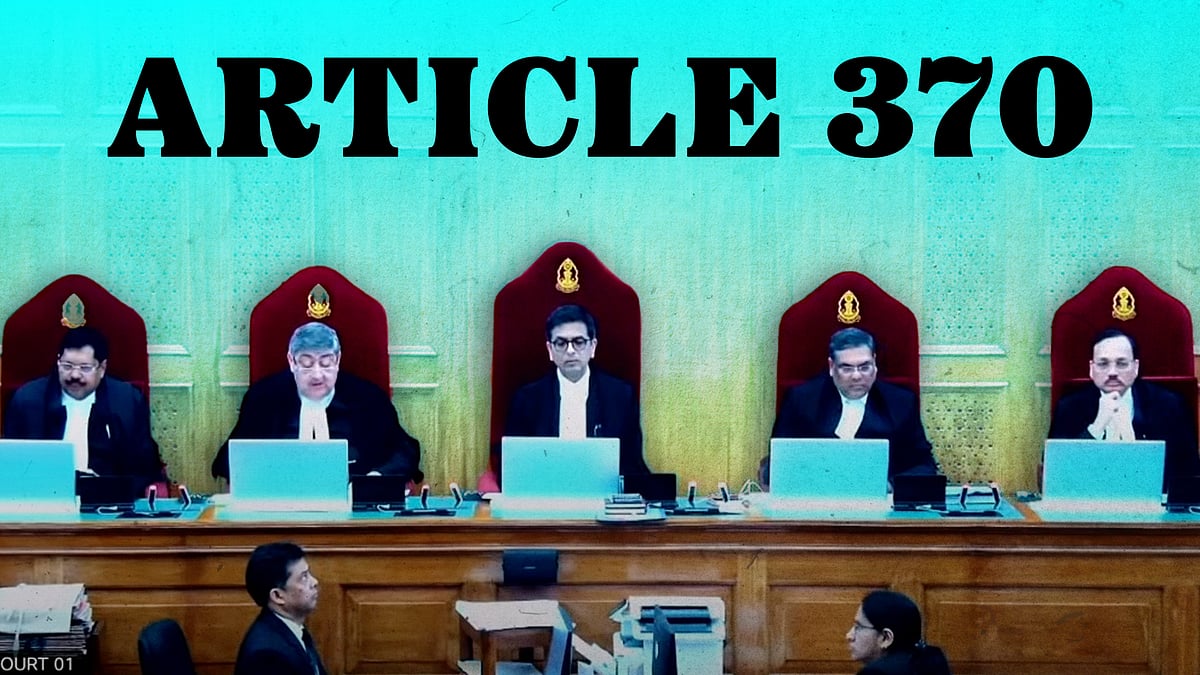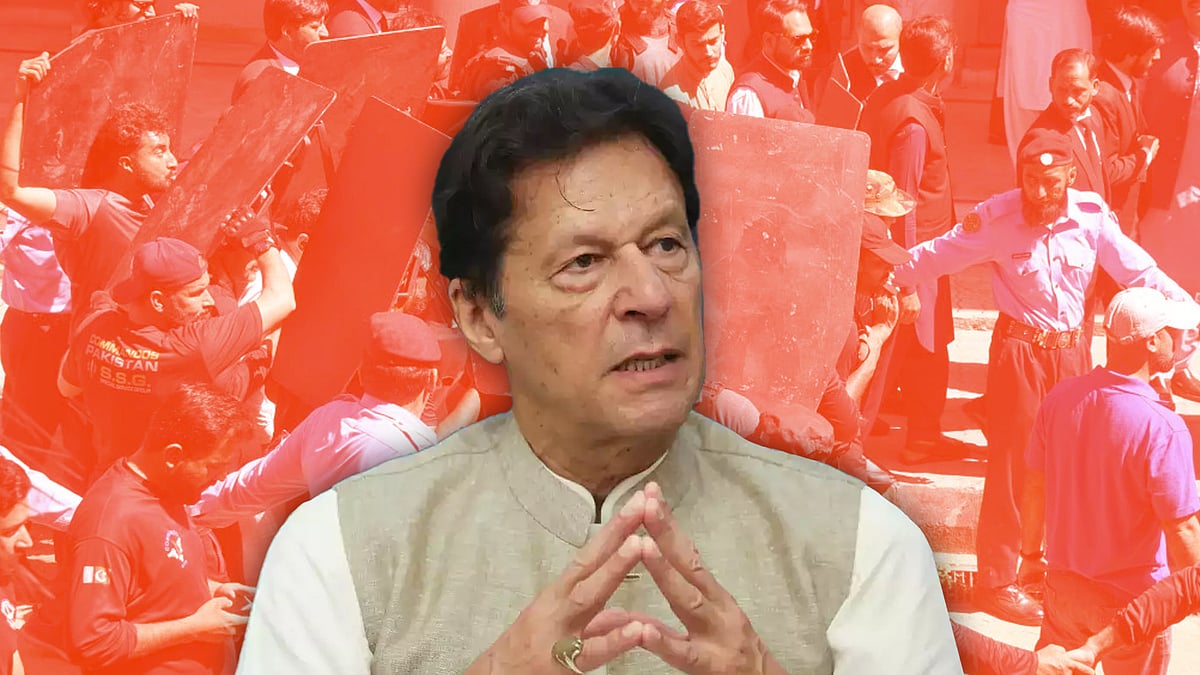Pakistan’s options after Article 370 verdict: Can it do the unthinkable?
It needs a courageous politician to make the first move but Nawaz Sharif, likely the next PM, is also dependent on the army.
The Supreme Court last week upheld the abrogation of Article 370, ruling that the president had the power to do so even without recourse to Parliament. It also upheld the downgrading and division of the erstwhile state into two union territories.
The verdict hammered the final nail into the coffin of Jammu and Kashmir’s special status. Kashmir’s public responded with the enforced silence that has been the hallmark of the valley since 2019 – a heavy silence steeped in the anger and bitterness that comes with humiliation. The “record” tourism this year is not the most reliable indicator of Gross Kashmiri Happiness.
After the verdict, political leaders Mehbooba Mufti and Omar Abdullah spoke angrily about carrying on the struggle. Significantly, Abdullah said he would double down to work next year as two elections were coming up.
The Supreme Court has said elections should take place in J&K before September 2024. It also asked the government to restore J&K’s statehood (minus Ladakh) at the “earliest”, but failed to set a timeline for it. So it is unclear yet if the J&K elections, if these are held per the Supreme Court’s orders, are to be for a state assembly or a UT assembly.
Even before the verdict, parties in J&K were getting ready for the Lok Sabha polls. As a state, J&K had six seats in the 2014 election. After the 2019 changes, the union territory of J&K has five seats and Ladakh has one. As Abdullah’s stated work plan for 2024 indicates, parties here are sure to participate in the election, either together or separately.
The alternative is a boycott, which is a sure path to political irrelevance and oblivion.
Pakistan’s dismissal
Within hours of the Supreme Court announcing its verdict, Pakistan came out with a seemingly strong statement by its caretaker Foreign Minister Jalil Abbas Jilani, describing India’s judiciary as “pliant”.
“Pakistan categorically rejects the judgement announced by the Supreme Court of India on the status of Indian illegally-occupied Jammu Kashmir. Jammu and Kashmir is an internationally recognised dispute which remains on the agenda of the United Nations Security Council for over seven decades,” Jilani said.
He added, “The final disposition of Jammu and Kashmir is to be made in accordance with the relevant United Nations Security Council and it is to be made in accordance with the aspirations of the Kashmiri people.”
He followed it up with letters to the United Nations, Organisation of Islamic Cooperation and European Union, “inviting their attention to the illegality of the recent judgement by the Supreme Court of India”.
An aside: Twenty years ago, Jilani had been Pakistan’s deputy high commissioner in India when both sides had downgraded ties and withdrawn their ambassadors over the 2001 Parliament attack. He was subsequently expelled from India.
What are Pakistan’s options?
Realistically speaking, Pakistan has limited options.
One, it can choose the route of international diplomacy to persuade the world to see Kashmir through a lens that blacks out half the story , which includes Pakistan’s own role in 1947 and in the full-blown militancy starting in the 1990s.
Two, it can continue to do what it has done since 1990: keep the fire of militancy alive in the valley and string along young Kashmiris willing to sacrifice their lives in the belief that they will, just like the Taliban, free Kashmir from India with Pakistani assistance.
Three, it can choose to do the unthinkable. It could accept Delhi’s decision, a politically driven constitutional change to do away with J&K’s “separateness” within India. Pakistan could see the verdict as a historic opportunity to accept what is the most obvious and viable solution to the Kashmir issue– accept the Line of Control as an international border and officially integrate the territories of J&K on the Pakistan side.
The first option has long been a non-starter. Arguably, Kashmir does not have the same resonance in the international community that it once did. India’s clout as an economic power and its strategic importance as a rising economy – with a population that has overtaken China’s and offering goods manufacturing nations the world’s biggest market – have ensured that Pakistan and its Kashmir narrative are not getting as much attention as they once perhaps did.
The EU and UN have not responded to Jilani’s missives. But a day after the Supreme Court verdict, the OIC expressed its “concern”, reiterating its earlier call to India to “reverse all illegal and unilateral measures taken since 5 August 2019”.
This is pro forma and hardly troubles India, which is confident of its strong, bilateral ties with Gulf countries including the top two, Saudi Arabia and the UAE. The Sultan of Oman’s visit to Delhi days after the verdict and India’s day of mourning for the passing of Kuwait’s emir showed, in their own way, that Delhi’s relationship with Islamic countries is not mediated by the OIC.
The second option – to keep Kashmiri militancy alive – is one that Pakistan has never stopped exercising. It only turns the volume up or down as per convenience. It’s clear the ambushes and attacks in Rajouri-Poonch region of Jammu since October 2021, claiming the lives of 26 soldiers so far, was not the work of local militants.
The Indian army may be loath to say it out loud, that a bunch of cross-border militants came over or under the LoC and are behind the mayhem, as it reflects poorly on them. But everyone in the security establishment knows that had these militants been locals, they would have been easier to find and track. They could not have simply vanished as these militants have done each time, only to reappear and inflict fresh violence. What Pakistan wants to signal to Kashmiris, through these well-trained, high-endurance militants, is that the fight is still on. They should not give up.
But it will bring more grief and pain to Kashmir and Kashmiris. The Indian state is now more ruthless and intolerant of any political dissent, let alone sub-nationalism, than at any time in its 75-year history. As must be clear by now, the Modi government is not out to win hearts and minds in Kashmir. It is focused on its own Hindutva constituencies, particularly in northern India, to drive home to them that it fulfilled its long-made promise to do away with “two constitutions” in one nation and make Kashmir fully “India”.
If Pakistan continues down this path, a point may come (if it hasn’t already) when Kashmiris will plead with it to leave their kids alone. History will be the judge of what Pakistan achieved with its policy of proxy war against India in Kashmir.
The third option is akin to blasphemy. Pakistanis are brought up to believe that Kashmir is the country's “jugular vein” far longer than Indians have been familiar with the phrase “atoot ang”.
J&K’s two territories on the Pakistan side of the LoC – Pakistan-occupied Kashmir (known in Pakistan as Azad Kashmir) and Gilgit-Baltistan – are administered in all but name by Pakistan’s ISI. But neither of these is officially a part of Pakistan, as it was believed that annexing the two territories would undermine Pakistan’s case that the matter can only be resolved through UN Security Council resolutions.
Article 1 of the 1972 Constitution of Pakistan names four provinces (Punjab, Sind, Khyber Pakhtunkhwa and Balochistan), the Islamabad Capital Territory, the Federally Administered Tribal Areas, and “such states and territories as are or may be included in Pakistan, whether by accession or otherwise”.
Article 257 keeps the myth of separateness alive: “When the people of the State of Jammu & Kashmir decide to accede to Pakistan, the relationship between Pakistan and the State shall be determined in accordance with the wishes of the people of that State.”
Such an accession, if ever within the realm of possibility, is now ruled out. Does the present provide an inflection point that empowers Pakistan to incorporate the two territories and make de jure what is already de facto?
For the Pakistan deep state, it will mean giving up the one cause that can still rally the nation behind the army as the overseer and the final arbiter of their destiny. But for the people, now stuck in endless cycles of “selections” and army rule by proxy, accepting the formalisation of the LoC into an international border could be an important step on the route to becoming a true civilian democracy. Relations with India may or may not improve, but the burden of the “Kashmir banega Pakistan” myth will end its stranglehold on the nation as it has done for 75 years. And it will help to improve the lives of people on both sides of the LoC. In particular, it may help pave the way for a better modus vivendi between Kashmir and the rest of India.
Incorporating PoK and Gilgit-Baltistan as the fifth and sixth provinces would also stop politicians on the Indian side from making tall promises of “bringing back” these two territories. As long as the demarcation is only an LoC (known as the Ceasefire Line from 1948 to 1972), such promises will continue to be made to pander to Hindutva fantasies. Parliamentary resolution or not, a promise to cross an international boundary would be another matter.
In the telling of many eminent Indians who were privy to what went on behind the scenes at Shimla in 1972, Indira Gandhi and Zulfikar Bhutto had agreed to convert the LoC into an international border. Gandhi told her aides PN Haksar and PN Dhar that Bhutto had given her his solemn assurance that he would gradually make the LoC the permanent border. But he also told her that he could not put this in writing, as no Pakistani politician could sign off on this in a formal agreement and hope to survive the backlash. Bhutto turned his back on his promise soon as he returned to Pakistan.
Five decades later, sensible people on both sides believe this is the only way forward for India, Pakistan and the people of Kashmir. That borders cannot be changed but can be made porous was the principle on which the talks of 2004-2007 were premised. All it needs is a courageous politician who can make the first move.
Will Nawaz Sharif be able to make that move if he is elected? Or will he, dependent on the army as he is for his “selection”, leave it, as the Chinese say conveniently, for future generations to resolve?
 Parliament’s powers, sovereignty, truth commission: 10 takeaways from the Article 370 verdict
Parliament’s powers, sovereignty, truth commission: 10 takeaways from the Article 370 verdict Imran Khan’s arrest a test of nerves for power alignments in Pakistan
Imran Khan’s arrest a test of nerves for power alignments in Pakistan